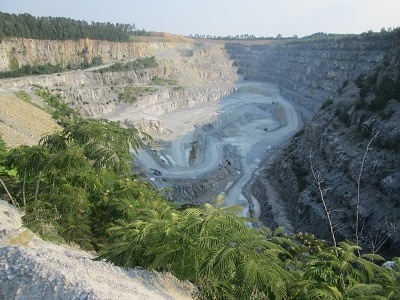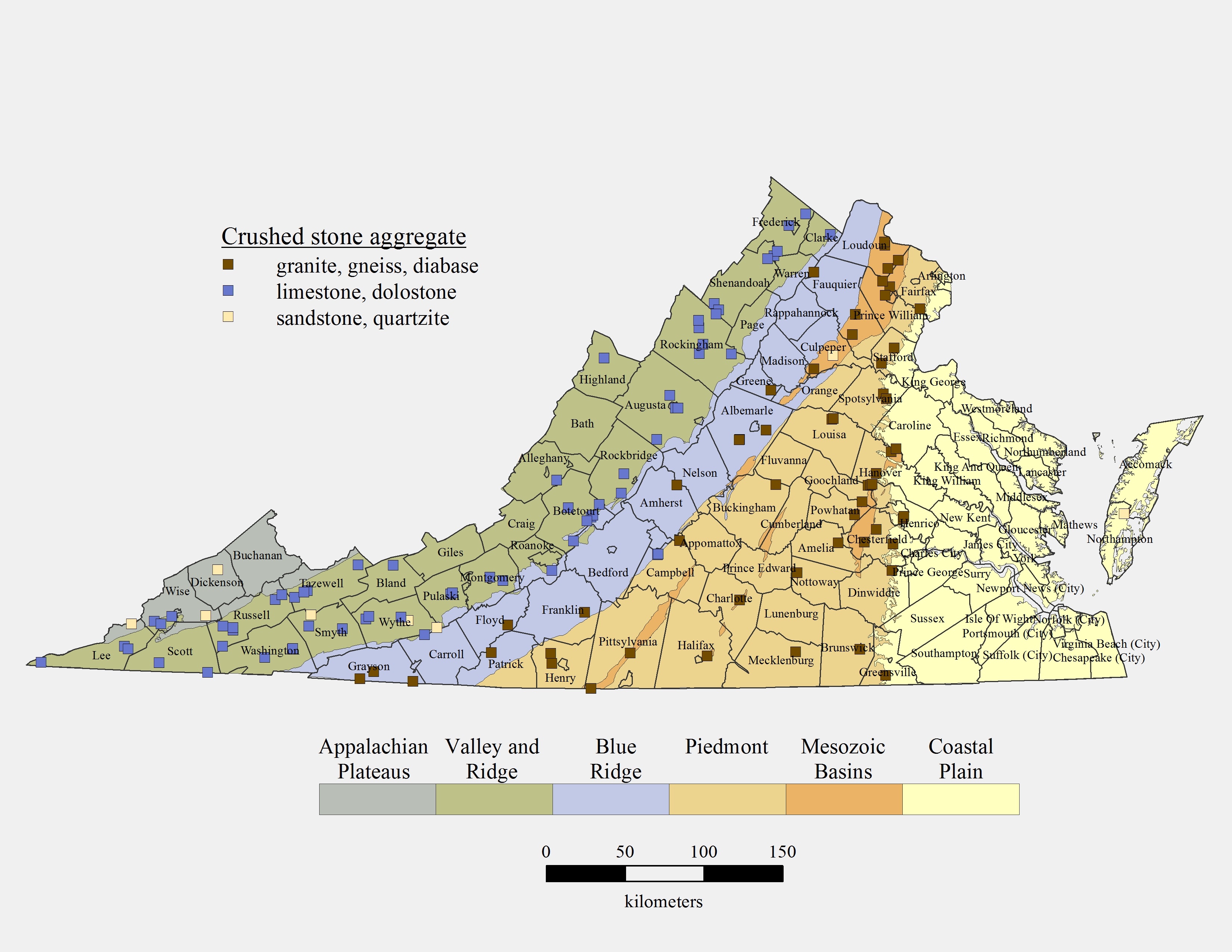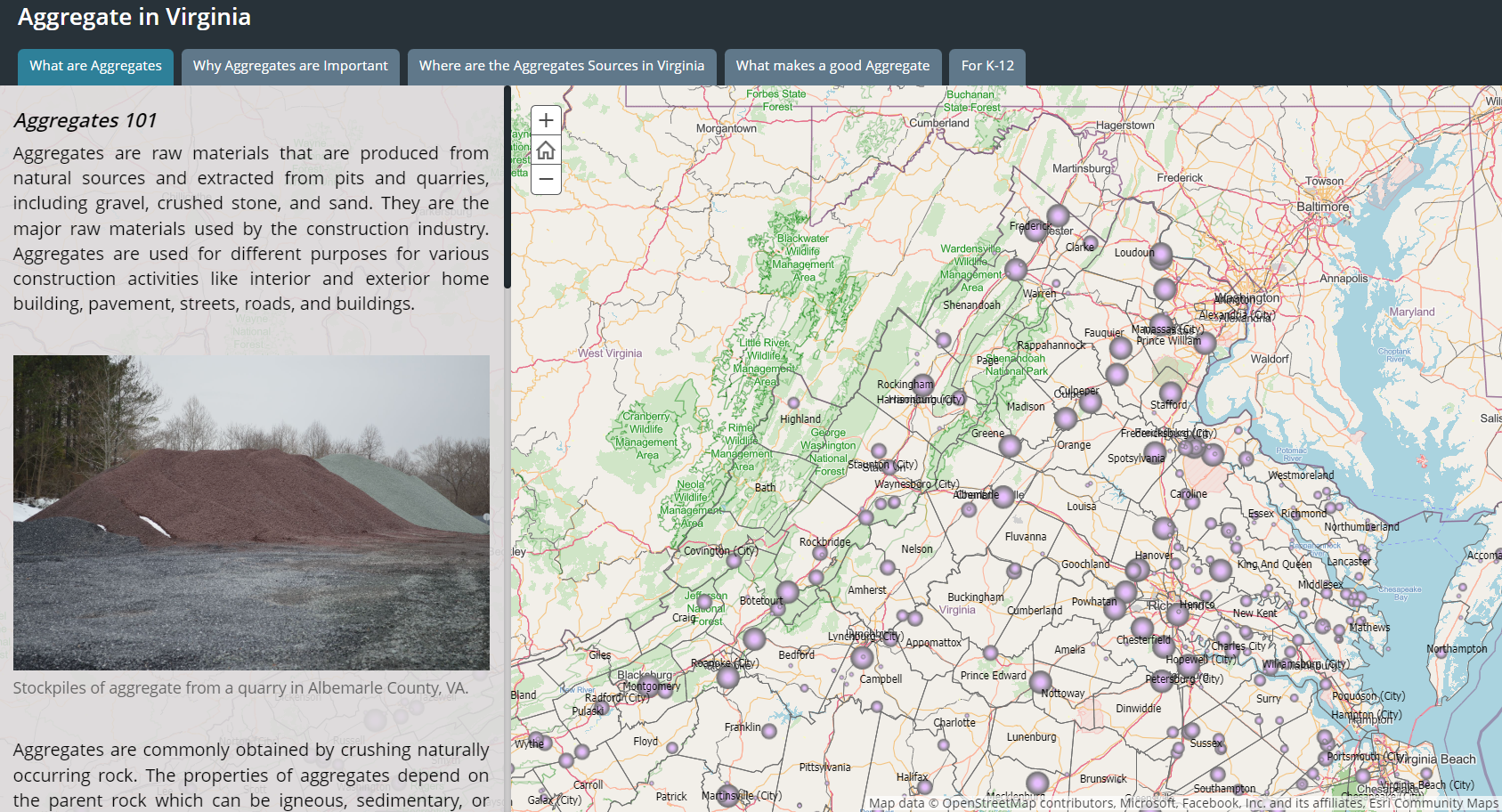
Vulcan Skippers Quarry, Greensville County
Crushed stone or aggregate can be any type of rock mechanically broken into smaller fragments. Crushed stone is an essential component for today's construction industry. It is predominantly used in road construction and maintenance as fill, roadbed material, and in concrete and asphalt for road surfaces.
In Virginia, limestone, dolostone, sandstone, quartzite, granite, gneiss, basalt, greenstone, aplite, slate, and marble are all quarried for use as crushed stone. Some of Virginia's limestone production is also processed for making cement and lime. Mine safety dust is also produced from limestone quarried in southwest Virginia. This dust is applied to the roof, walls and floor of coal mines to prevent explosions and to improve general visibility within the mines.
Number of mines producing crushed stone in Virginia: 134
Number of counties in Virginia with mines: 60
Number of operators: 49
Quantity produced in 2024: 57.4 million short tons
Most recent ranking (USGS) in the U.S.: 19th highest producing state in 2024
Estimated market value in 2024: $1.3 billion

Crushed Stone in Virginia
The economic downturn in the United States known as the Great Recession (late-2007 to 2009) had a significant impact on the production of construction aggregates in Virginia. In 2005, prior to the recession, Virginia ranked fifth in the nation in crushed stone output, according to the U.S. Geological Survey (USGS), with 86.2 million tons (78.2 million metric tons) produced that year. In the years following the recession, annual production has been significantly lower, as much as 34 percent below the average pre-recession level. The slow recovery of mine output since 2010 has averaged about 1.6 percent increase per year. Over the same period, the market value of aggregate sold in Virginia increased by about 5.2 percent annually. This reflects an annual increase in the sales unit price that is currently just over $22 per short ton. Since transportation costs are a significant economic factor in the marketable geographic range of construction aggregates beyond the mine site to the end user, the increasing sales price suggests opportunities for expanding the marketable range. To that end, high quality construction-grade resources must be carefully managed and conserved for the future as part of informed land use decision-making.

Annual production and estimated value 1
1 Estimates of annual mineral value are calculated using tonnages reported to Virginia Energy and commodity sales prices reported in numerous published and unpublished sources. The prices may include national or global industry averages. The calculated annual values do not necessarily reflect the actual sales prices received by mine operators in Virginia.
In 2022, Geology and Mineral Resources Program composed an interactive website: Aggregate in Virginia. This story map series include a description of aggregate and why they are important to us, the supply and demand status in each county, the location and production of aggregate mine sites, how geology can contribute to aggregate mining and land use planning, and the general geotechnical characteristics of aggregates in the state. This website also provides two activities for K-12 education. Click below to view the story map.
Selected References:
Department of Energy, 2020, Annual production reports submitted by mine operators, Mineral Mining Program.
Gooch, E.O., Wood, R.S., and Parrott, W.T., 1960, Sources of Aggregate Used in Virginia Highway Construction: Virginia Division of Mineral Resources Mineral Resources Report 1, 65 p.
Lovett, J.A., 1994,Non-fuel mineral resources in the southwest Virginia coalfield region: Virginia Division of Mineral Resources Publication 131, p. 121-136.
Lassetter, W.L. , 2019, Recent trends in the economic value of non-fuel mineral commodities produced in Virginia: Virginia Division of Geology and Mineral Resources Open File Report 2019-01.
U.S. Geological Survey, 2020, Crushed Stone Statistics and Information
Virginia Division of Mineral Resources, 1993, Geologic Map of Virginia: Virginia Division of Mineral Resources, scale 1:500,000.

